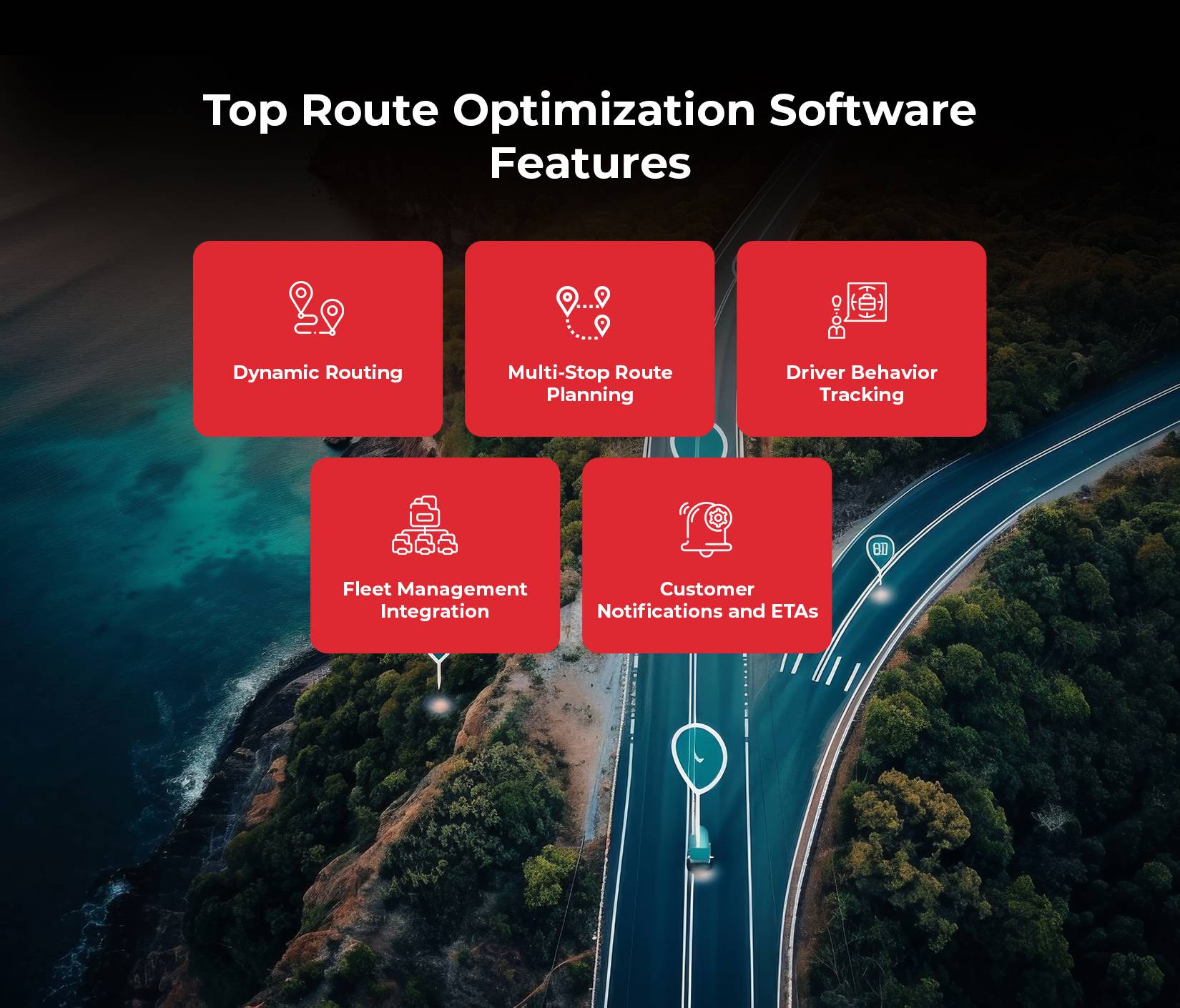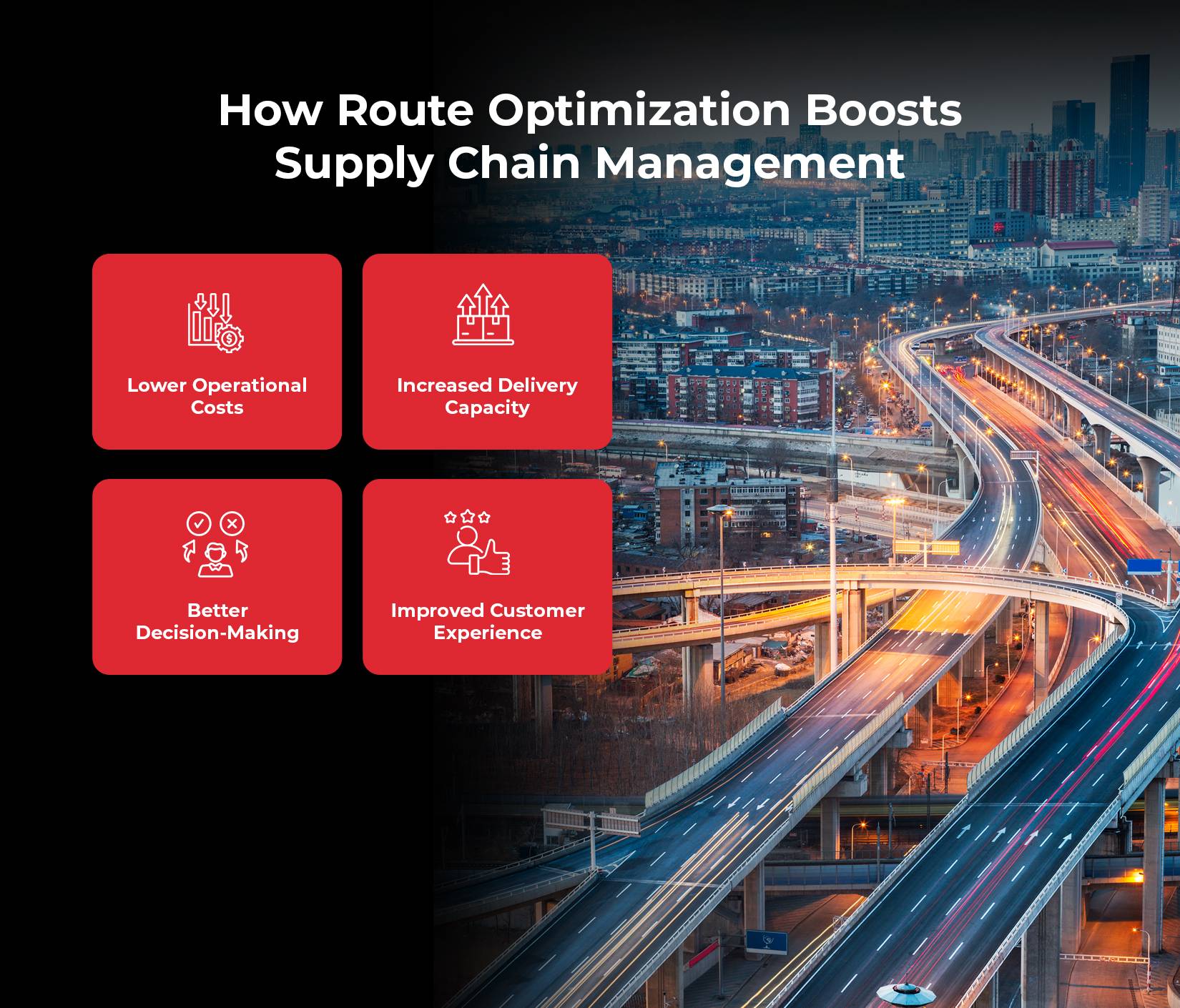In the world of logistics, every second counts. Delivery speed, fuel efficiency, and cost control are critical to maintaining a competitive edge. One tool that is revolutionizing the logistics landscape is route optimization software. This guide explores everything you need to know about route optimization software, its features, and how it is redefining supply chain efficiency.
In addition, we’ll take a closer look at the top route optimization software available in 2024 and the trends shaping the future of this essential technology.
What is Route Optimization?
Route optimization refers to the process of determining the most efficient route for a vehicle to take when delivering goods or providing services. Unlike traditional route planning, which calculates the shortest distance between two points, route optimization considers a range of variables. These factors include traffic, delivery time windows, fuel costs, vehicle capacity, and road restrictions, ensuring that each trip is as cost-efficient and timely as possible.
The difference can be significant. Studies suggest that businesses using route optimization can see savings of up to 30% in delivery time and fuel costs . In the age of e-commerce, where rapid delivery is not just an advantage but an expectation, route optimization software is indispensable for logistics-heavy industries.
Key Benefits of Route Optimization
1. Reduced Fuel Consumption:
By planning more efficient routes, businesses can reduce fuel costs by up to 20% .
2. Increased Delivery Capacity:
With optimized routing, delivery drivers can increase their capacity by 25% without adding more vehicles.
3. Improved Customer Satisfaction:
Ensuring on-time deliveries contributes to higher customer retention, with 80% of customers indicating they are more likely to reorder from companies that offer reliable, fast delivery.
Top Route Optimization Software Features

When evaluating route optimization software, it is important to understand the features that set the best options apart. High-quality route optimization solutions include the following features:
1. Dynamic Routing:
Real-time traffic conditions, weather updates, and unforeseen disruptions (like accidents) are factored into route adjustments, ensuring drivers take the quickest path.
2. Multi-Stop Route Planning:
Route delivery software that handles multiple stops efficiently saves time and reduces unnecessary backtracking. This feature is critical for businesses handling complex, multi-destination deliveries.
3. Driver Behavior Tracking:
Monitoring driver behavior such as speed, idling, and deviations from the planned route can help companies save fuel and improve safety.
4. Fleet Management Integration:
The ability to integrate route optimization with fleet management systems allows for smoother operations and better decision-making.
5. Customer Notifications and ETAs:
Automated customer notifications and real-time ETAs improve customer service by providing transparency on delivery statuses.
Each of these features helps ensure that deliveries are timely, efficient, and cost-effective, making the route optimization software an essential tool for logistics managers.
What’s the Difference Between Route Planning and Route Optimization?
While route planning and route optimization are often confused, they serve different purposes in logistics.
Route Planning:
This is a basic process of determining a route from point A to point B. It typically considers the shortest or fastest route without taking into account real-time conditions like traffic, road closures, or delivery windows. Route planning is static and doesn’t update once the route is created.
Route Optimization:
This goes beyond simple planning by factoring in multiple variables such as traffic patterns, vehicle load capacity, delivery priorities, and real-time weather updates. Optimization algorithms adjust routes dynamically to ensure the most efficient route is always selected.
According to a 2023 report by Forbes, businesses that switch from route planning to route optimization can reduce delivery times by 15-25%. This difference is especially crucial for businesses that need to maximize delivery efficiency while minimizing costs.
Why is Route Acceptability an Integral Aspect of Route Optimization?
Route acceptability refers to ensuring that the optimized route is practical and feasible for drivers. While a route might seem efficient on paper, it may not be suitable in real-world scenarios. Factors such as road quality, vehicle restrictions (like height limits), delivery time windows, and local regulations must be considered to ensure the route is not only efficient but also workable.
For instance, a shorter route may pass through a congested urban area with narrow streets unsuitable for large delivery trucks. Ignoring route acceptability can lead to delays, failed deliveries, or increased wear and tear on vehicles.
Incorporating route acceptability into the optimization process prevents these inefficiencies, resulting in smoother operations and reduced costs. Statistics show that route acceptability can improve on-time delivery rates by 18%.
What is a Multi-Stop Route Planner?
A multi-stop route planner is a specialized tool within route optimization software designed to handle complex delivery routes involving multiple stops. Businesses such as couriers, e-commerce platforms, and field services companies rely heavily on multi-stop route planners to ensure that multiple destinations can be reached efficiently in one trip.
Key Benefits of a Multi-Stop Route Planner:
-Increased Efficiency: Optimizing the order of deliveries can reduce travel distances by up to 30%, allowing drivers to make more stops within the same time frame .
-Reduced Costs: By minimizing unnecessary mileage, businesses can cut fuel expenses significantly.
-Better Customer Service: Multi-stop route planners ensure that deliveries are completed within designated time windows, improving reliability and customer satisfaction.
Without multi-stop route planning, businesses often face backtracking or inefficient routes that lead to higher operational costs and longer delivery times.
How Route Optimization Boosts Supply Chain Management

Effective supply chain management relies heavily on efficient delivery and transportation. Route optimization software is a key driver of supply chain improvements, particularly in industries that require high volumes of deliveries. Here’s how it impacts overall supply chain performance:
1. Lower Operational Costs:
By optimizing routes, businesses reduce fuel consumption, labor hours, and vehicle maintenance costs. Studies show that companies using route optimization reduce transportation costs by an average of 15%.
2. Increased Delivery Capacity:
With optimized routes, logistics teams can handle more deliveries in less time, enhancing overall productivity.
3. Better Decision Making:
By integrating route optimization software with fleet management tools, businesses gain access to valuable insights, allowing them to make data-driven decisions to improve efficiency.
4. Improved Customer Experience:
Meeting delivery deadlines consistently enhances customer trust. An optimized route ensures that delivery times are predictable, leading to greater customer satisfaction.
Incorporating route delivery software into your supply chain management processes can unlock significant operational efficiencies, helping you stay competitive in today’s fast-paced logistics landscape.
How AI Route Optimization is Redefining Delivery Efficiency
Artificial intelligence (AI) is transforming how route optimization software operates. By analyzing large volumes of data and learning from past deliveries, AI systems can predict and prevent potential issues before they arise.
How AI-Powered Route Optimization Benefits Businesses:
-Real-Time Route Adjustments: AI can dynamically alter delivery routes based on real-time data from traffic conditions, accidents, and weather changes. This can reduce delays by as much as 20% .
-Predictive Analysis: AI uses historical data to forecast potential disruptions, allowing businesses to adjust schedules proactively.
-Continuous Learning: AI systems become more accurate over time, constantly learning from previous routes to optimize future deliveries.
According to a 2023 McKinsey study, businesses that incorporate AI into their route optimization processes saw a 35% increase in delivery efficiency.
The Best Route Optimization Software of 2024
As the logistics landscape continues to evolve, businesses need access to top-notch software solutions. Here are the top route optimization software solutions in 2024:
1. LogiNext Mile:
LogiNext is a leading delivery route optimization software, widely used in industries like F&B, CEP, CPG, transportation, retail, and eCommerce. It streamlines operations with real-time tracking and enhances efficiency across first-mile, middle-mile, and last-mile delivery.
2. Routific:
Routific provides route optimization software to help businesses efficiently plan and optimize delivery routes, focusing on improving last-mile logistics and streamlining delivery operations.
3. Route4Me:
Route4Me is a route optimization platform designed to help businesses plan, optimize, and manage delivery and service routes, ensuring efficient operations for improved logistics and customer satisfaction.
4. OnFleet:
Onfleet is a last-mile delivery platform that helps businesses optimize delivery operations, streamline routes, and improve the overall customer delivery experience. Its solutions enhance efficiency and satisfaction.
5. OptimoRoute:
OptimoRoute is a logistics software that optimizes route planning and scheduling for delivery or service operations, offering features to streamline processes, enhance efficiency, and cut costs.
6. Zeo Route Planner:
Zeo Route Planner optimizes delivery and service routes for businesses of all sizes, featuring an intuitive interface to boost efficiency, cut fuel costs, and improve customer satisfaction.
7. Far Eye:
FarEye specializes in logistics technology, offering solutions to enhance and optimize supply chain operations, with a focus on last-mile delivery and logistics visibility for businesses.
Each of these solutions offers unique features tailored to the needs of different industries, making them some of the best route planners for 2024.
Conclusion
In today’s fast-paced delivery environment, route optimization software is no longer a luxury but a necessity. From reducing costs to improving delivery times and enhancing customer satisfaction, the benefits are clear. Businesses that invest in powerful routing software—particularly those leveraging AI—will be well-equipped to meet the evolving demands of the logistics industry.
LogiNext Mile’s route optimization software provides essential tools to streamline operations, reduce costs, and boost overall supply chain performance. Investing in these solutions will not only increase efficiency but also enhance your business’s ability to stay competitive in an increasingly demanding market. Click on the red button and book a demo with us today!
Like





















